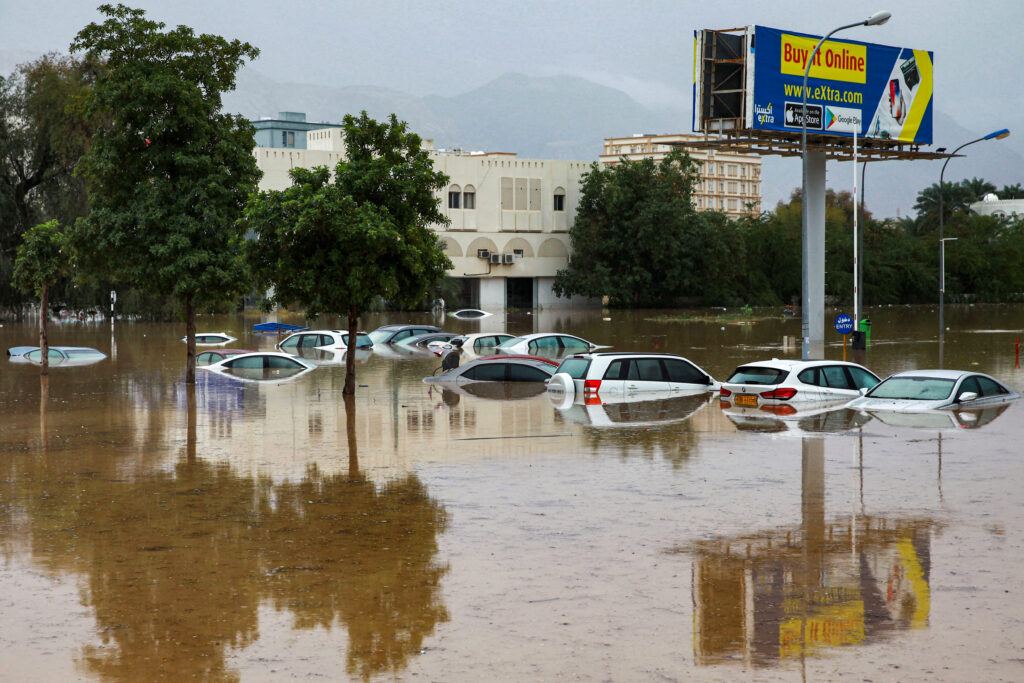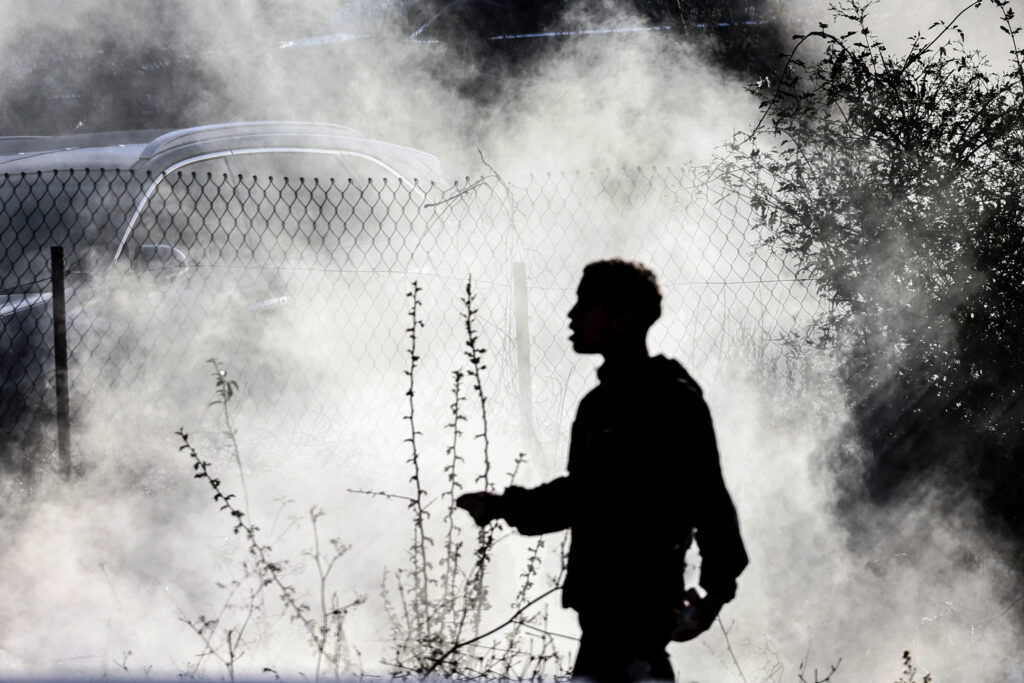
Series Introduction
COP 27 and Climate Action In The Middle East
The Middle East region, a large swathe of which comprises deserts and semi-arid zones, is a climate hotspot. It is warming almost two times faster than the global average. Intensive exploitation and use of fossil fuels, which lead to increased greenhouse gas emissions, are part of the reason for the warming. Heatwaves as well as extreme weather events such as droughts, dust storms and torrential rains will have disruptive health and socioeconomic impacts.
The 27th Conference of the Parties (COP) to the United Nations Framework Convention on Climate Change (UNFCCC), set to place in Sharm el-Sheikh, Egypt, from 6 November 2022 is a timely opportunity to examine the progress of climate action in the Middle East. This series of Insights looks at the key climate threats faced by countries in the region and the mitigation and adaptation measures pledged or implemented so far, including financing challenges. It hopes to identify the implementation gaps in these measures and offer possible solutions.
CLICK HERE FOR THE PDF
*Suad Al-Manji
Oman is one of several countries that are highly vulnerable to extreme weather events, and climate change is expected to exacerbate this vulnerability. The country has already lost millions of dollars because of tropical cyclones and dangerous flash floods. Oman has in place a national disaster management system, which is considered one of the best in the region. The system has gone through a long development process since it was first established in 1989 and is still evolving. With COP 27 approaching, this article looks at how the system could be strengthened to improve Oman’s resilience to natural disasters.
The Arabian peninsula, an arid and semi-arid region with a large expanse of desert known as the Empty Quarter, is marked by extreme temperatures and limited seasonal rainfall. Climatological and natural hazards have caused severe socio-economic damage and are critical problems for people in the area.[1]
Murakami et al. report an increase in the frequency of extremely severe cyclonic storms in the pre-monsoon period in the Arabian Sea area,[2] which is attributed to elevated anthropogenic black carbon and sulfate emissions.[3] These anthropogenic emissions, referring to environmental change originating from human activity, weaken the vertical wind shear (or the change in direction and speed of winds at increasing heights in the atmosphere). an increase in the intensity of tropical cyclones in the Arabian Sea. Most of these more intense tropical cyclones make landfall,[4] posing a growing risk to people and infrastructure.
Meteorological and Hydrological Hazards in Oman
Oman is highly affected by meteorological hazards like cyclones and storms from the Arabian Sea. Extreme rainfall events caused by thunderstorms and tropical storms in turn lead to damaging flash floods.[5]
Tropical Cyclones
Tropical cyclones are among the most common sources of natural disasters in Oman, especially in vulnerable areas. They are usually accompanied by strong winds, rising waves and severe floods in valleys, which result in significant physical and human losses. Tropical cyclones directly affect coastal areas from Muscat in the north to Oman’s border with Yemen in the south, with exceptional cases extending to the coastal areas bordering the Sea of Oman. For example, in 2007, cyclone Guno, the first cyclone to reach Category 5 in the Arabian Sea in the last 100 years, caused losses of about US$4 billion and nearly 100 deaths.[6] Three years later, cyclone Phet struck, resulting in massive losses. Guno was not the only record-busting hydrological event to directly impact northern Oman in recent years; in October 2021, tropical cyclone Shaheen killed 11 people, caused significant infrastructure losses, and damaged about 1,000 homes in the area. The Ministry of Finance estimated the damage to be worth US$500 million.[7] The cyclone took a very rare track to Al Batina in north Oman; the last tropical cyclone that took this direction was in 1890, when 727 people were killed and the losses to the Omani economy estimated at US$9 million.[8]
Floods
Flash floods result from short periods of heavy rainfall and are common near warm oceans, along steep mountain fronts in the path of moist winds, and in areas prone to thunderstorms.[9] A flash flood “is the amount of rainfall for a given duration over a small basin needed to create minor flooding (bank full) conditions at the outlet of the basin”. It can carry large loads of waste, such as logs, which may cause damage to infrastructure in surrounding areas. Flash floods are the most common type of floods in Oman. In May 1981, for instance, extreme rainfall produced substantial flooding in Muscat that caused damage to roads. The August 2022 eastern wave in Al-Awabi in north Oman produced about 291 mm of rain in a few hours, causing an enormous flash flood.
The risk of flash floods is due to a combination of meteorological events and planning mistakes, notably rapid urbanisation since 1980 involving massive infrastructural development, and significant land use change since 1970. Most studies highlight concerns about peak flood discharge arising from the rapid urbanisation of flood-prone areas in Oman. Green spaces have declined by 84% in the urban areas of Muscat, and there is no strong legislation to prevent this from happening.
Disaster Resilience
Building resilience to disaster is essential for every country, especially those that are highly vulnerable to natural hazards. The UN Office for Disaster Risk Reduction (UNDRR) defines resilience in the context of disaster risk as “the ability of a system, community or society exposed to hazards to resist, absorb, accommodate, adapt to, transform and recover from the effects of a hazard in a timely and efficient manner, including the preservation and restoration of its essential basic structures and functions through risk management.”[10] Putting it succinctly, building resilience involves not just anticipating, and planning and preparing for, disasters but also proactively undertaking long-term projects that prevent disasters or reduce the risk of disasters.
Disaster Resilience in Oman
The first record of establishing a national-level emergency management system in Oman was in 1988. The Royal Oman Police and four other government departments that mooted the idea established the National Committee for Emergencies that year under the leadership of the police. Another committee was established in the same year, the National Committee for Natural Disasters.[11]
There is no record of any activities by either of the committees until 1999, when the two committes were merged to form the National Committee for Civil Defence (NCCD).The growing threat of international terrorism, vindicated soon afterwards by the events of 9/11, may have been the impetus for subsuming natural disaster and emergency management under a wider civil defence umbrella. In 2002 the NCCD was elevated to a semi-autonomous section within the Royal Oman Police. Subsequently, subcommittees were formed at regional levels to carry out emergency preparedness activities.[12]
Cyclone Guno in 2007 saw the committee engaging in its first national-level disaster management action, following which Sultan Qaboos called for a more proactive approach to emergency management. After cyclone Phet struck in 2010, Sultan Qaboos ordered the NCCD to ramp up capabilities and decentralise its operations. Subsequently, in 2020, when Sultan Haitham issued a new decree to amend the civil defence law, the National Centre for Emergency Management (NCEM) was formed. A year later, following tropical storm Shaheen, the establishment of the National Emergency Fund was announced.
Currently, the NCEM is responsible for emergency management in Oman through a comprehensive system of disaster risk reduction. The system consists of eight permanent working groups (or sectors) responsible for planning, preparing, and responding to emergencies (see Figure 1). These sectors are divided into subsectors that represent the government and non-governmental organisations.
However, the NCEM is still more reactive than proactive. This means that it has not planned for extreme scenarios and has a higher chance of failure during such events. That said, some of its constituent bodies are more proactive than the rest. Apart from the Early Warning Centre (EWC), these include the Medical Response and Public Health sector and the Public Authority for Civil Defence. These bodies are highly productive and communicate well with organisations such as the Ministry of Social Development. Therefore, the system has the potential to manage disaster risks if there are also significant anticipatory planning efforts in related organisations.
The following section outlines some of the strengths and shortcomings of the NCEM and offers suggestions on how resilience can be enhanced.
(1) Understanding disaster risk
The Sendai Framework for Disaster Risk Reduction,[13] an intergovernmental plan that lays out concrete actions for dealing with the risks of disaster, stresses that the first step in developing disaster resilience is to better understand disaster risk. The framework calls for understanding disaster risk in all its dimensions: vulnerability, capacity, exposure of persons and assets, hazard characteristics and the environment. This requires systematic collection and analysis of relevant data on natural hazards and other risks. In this regard, there is a need to involve and tap the expertise of all relevant organisations and stakeholders in Oman, including the scientific and academic community. Such data must also be disseminated in a timely manner to all relevant organisations and stakeholders so that they can make informed decisions.
In addition to understanding natural hazards, there is a need to do risk assessment for infrastructure and essential services and communities in vulnerable locations. For example, undertaking a comprehensive risk assessment of drainage systems is essential to reduce the risk of floods while a risk assessment of roads is essential to prevent damage from heavy floods and extreme heat. In 2022 the Omani cabinet instructed all government agencies to establish a risk management department in their respective organisational structures with the responsibility of providing a complete risk assessment and risk register for their institutions.
(2) Enhancing disaster risk governance
The Sendai Framework’s second priority focuses on developing and strengthening disaster risk governance.[14] Since building resilience is about effectively protecting people’s lives and ensuring that their health, livelihoods, socio-economic systems, ecosystems, etc, can bounce back from disaster and function effectively again, it involves tasks that cut across functional lines in government, from health, infrastructure, policing, the economy, and social services, to name a few. Knowledge of local conditions or disaster impacts does not always reside with a single government agency or even with government itself but with various actors at ground level. Also, the ability to act locally during the initial stages of a disaster is not always within the capacity of first responders who, for various logistical reasons, may not be able to reach a community or individuals in distress in good time. So the responsibility of providing initial assistance often falls on local volunteers and neighbours. Therefore, an inclusive approach is needed to ensure that there are diverse inputs into the planning process and to ensure that the country’s human resources can be fully harnessed in disaster management.
Thus, good disaster risk governance calls for an overarching interagency body that can work in a coordinated manner to anticipate disasters, plan and prepare for dealing with them and effectively implement those plans. This overarching body must have a strong legal basis with clearly assigned responsibilities for it to be effective.
Coordination issues. Whether the NCEM has the overarching authority to effectively coordinate the work of various government ministries and other agencies, especially those that are well resourced and powerful in their own right, is not clear. Across the world, bureaucratic rivalries between various government departments, lack of clarity over jurisdictional boundaries and insufficient communication and information sharing often affect the effective functioning of interagency bodies. To be effective the Royal Oman Police, which is the lead agency steering the NCEM, needs to rise above such issues to provide leadership and strategic direction. It also needs to ensure that the other ministries and agencies implement the emergency measures agreed at the joint planning stage.
Clarity of roles and responsibilities. The NCEM has clear organising rules and regulations in some respects. However, organisations face some difficulties when implementing disaster management plans because some of the rules and regulations are unclear. There may also be boundary issues. There is therefore a need for more detailed written rules and regulations defining roles and responsibilities. There is also a need for decentralisation of responsibilities as local authorities are often better placed than national authorities to understand the situation on the ground and plan for contingencies. And there must be effective interagency coordination on the ground as well.
Laws, regulations and policies. In addition to planning for contingencies, an effective disaster governance system involves instituting laws and policies to prevent disaster risks. These could include building codes to improve structural standards as well as prudent land use policies, for example, forbidding the building of settlements in flood-prone areas. It is commendable that the new urban planning strategy for Oman Vision 2040[15] includes natural hazards and climate change as essential variables to be included in any development project.
Communication and information sharing. To improve disaster governance, the NCEM needs to have increased communication and interaction between government agencies and between these and non-governmental bodies and private sector organisations so that the NCEM as a whole can make more informed decisions. The NCEM and EWC have critical influence on the system during severe weather events. But their roles will be meaningful only if there is sufficient communication and interaction with other parts of the system, including entities outside the structure, such as the non-governmental and private sectors.
Public awareness and involvement. Since disasters directly affect people and their properties, the public cannot be just considered passive recipients of government assistance during disasters. For instance, people’s homes need to be equipped to deal with disasters, they need to know where evacuation points are, and they need to be well informed on what to do during a disaster and what not to do that could impede the work of first responders. In short, public awareness, involvement and support are critical in enhancing the performance of the various agencies during disasters. Therefore, Oman needs to develop an active programme of public awareness through the media and education system. This will involve providing the public with better information about the type of natural disasters they are likely to be exposed to, the best ways to avoid disasters, and the best means of preparing for inevitable disasters.
(3) Long-term investments in disaster risk prevention and reduction
The Sendai Framework’s third priority for action focuses on investment in disaster risk reduction for resilience. “Public and private investment in disaster risk prevention and reduction through structural and non-structural measures is to enhance the economic, social, health and cultural resilience of persons, communities, countries and their assets, as well as the environment.” This involves long-term structural adaptations, such as investing in better drainage systems to prevent flooding and in roads and bridges that are resilient to flood and heat damage. It could also involve relocation of public facilities and infrastructure from disaster-prone areas. Long-term investments in disaster management should go beyond enhancing economic resilience and the resilience of public infrastructure to improving the community’s resilience as well. Natural hazards often affect the low income more severely. Thus, apart from providing assistance for structural changes to housing or relocation assistance, there is also the need to implement inclusive policies and social safety mechanisms and look into social aspects, such as health and education, so that the social vulnerability to natural hazards can be reduced.
Resources. An effective emergency management system and its constituent agencies need to be well resourced so that they can be prepared to deal with disaster risks. Oman’s announcement of the National Emergency Fund in 2021 was an important element in disaster management. In terms of physical resources, Oman’s Ministry of Social Development manages the shelter and relief sector during a disaster. Partners have been astutely roped in from government and non-government organisations, such as the Omani authority for charity, the Public Authority for Stores and Food Reserves, and even the private sector. The shelters are usually schools, other government facilities, or private buildings (e.g., hotels), and are managed by the staff working in the respective venues. In addition, the Ministry of Defence and volunteers help mobilise resources during disasters. But, apart from providing sufficient funding support for emergency relief, there is a need for agencies to be provided with adequate annual budgets to support their disaster planning efforts and the long-term investments they need to undertake.
Conclusion
On balance, Oman seems to have the right instincts for emergency management. Whether its emergency management system is robust will depend on constant re-evaluation and preparation for emergencies as conditions evolve. More significantly, whether its efforts to build disaster resilience go beyond emergency management to undertaking efforts to prevent and mitigate the impact of disasters and adapt to inevitable disasters will be key in the years to come.
* Dr Suad Al-Manji is the head of risk management at the Ministry of Education, Oman. She has a PhD in disaster management (community resilience) from the University of Leeds, United Kingdom.
Image Caption: Cars almost completely submerged in flood waters at a parking lot outside a shopping centre in Muscat, Oman, 4 January 2022. Mohammed Mahjoub/AFP.
End Notes
[1] Mansour Almazroui, M Nazrul Islam, PD Jones, H Athar, and M Ashfaqur Rahman, “Recent Climate Change in the Arabian Peninsula: Seasonal Rainfall and Temperature Climatology of Saudi Arabia for 1979–2009”, Atmospheric Research 111 (2012): 29–45; N. J. Middleton and T. Sternberg, “Climate Hazards in Drylands: A Review”, Earth-Science Reviews 126 (2013): 48–57; Sujith Ravi, David D Breshears, Travis E Huxman, and Paolo D’Odorico, “Land Degradation in Drylands: Interactions among Hydrologic–Aeolian Erosion and Vegetation Dynamics”, Geomorphology 116, no. 3–4 (2010): 236–245.
[2] Hiroyuki Murakami, Gabriel A Vecchi, and Seth Underwood, “Increasing Frequency of Extremely Severe Cyclonic Storms over the Arabian Sea,”, Nature Climate Change 7, no. 12 (2017): 885–889.
[3] Amato T Evan and Suzana J Camargo, “A Climatology of Arabian Sea Cyclonic Storms,” Journal of climate 24, no. 1 (2011). Ryan L Sriver, “Man-Made Cyclones,” Nature 479, no. 7371 (2011).
[4] Amato T. Evan, James P. Kossin, Chul “Eddy” Chung, and V. Ramanathan, “Arabian Sea Tropical Cyclones Intensified by Emissions of Black Carbon and Other Aerosols”, Nature 479, no. 7371 (2011): 94–97.
[5] Khalid Al-Kalbani, “Monitoring and Evaluating Flood Risk and Their Management and Mitigation Using Geographical Information Systems, and Remote Sensing”, Sultan Qaboos University, 2011; Sulaiman Nasser Al-Riyami, “Wadi Aday Aquifer Potential and Future Use, Muscat, Sultanate of Oman”, University College of North Wales, 1996.
[6] David Membery, “Monsoon Tropical Cyclones: Part 2”, Weather 57, no. 7 (2002): 246–55.
[7] Times of Oman, “Cyclone Shaheen Damage in Oman Pegged at OMR200 Million”, Times of Oman, 12 December 2021, https://timesofoman.com/article/110471-cyclone-shaheen-damage-in-oman-pegged-at-omr200-million
[8] Matthew S. Hopper, “Cyclones, Drought, and Slavery: Environment and Enslavement in the Western Indian Ocean, 1870s to 1920s”, In Natural Hazards and Peoples in the Indian Ocean World, eds. George Bankoff and Joseph Christensen (Springer, 2016).
[9] Timothy M. Kusky, Geological Hazards: A Sourcebook (Greenwood Publishing Group, 2003).
[10] UN Office for Disaster Risk Reduction (UNDRR), Sendai Framework for Disaster Risk Reduction 2015-2030, 2021, https://www.preventionweb.net/understanding-disaster-risk/key-concepts/resilience.
[11] Sultan A. Al-Shaqsi, “Emergency Management in the Arabian Peninsula: A Case Study from the Sultanate of Oman”, 2015.
[12] Sultan A. Al-Shaqsi, “Emergency Management in the Arabian Peninsula”.
[13] UN Office for Disaster Risk Reduction (UNDRR), Sendai Framework for Disaster Risk Reduction 2015-2030, 2021, https://www.preventionweb.net/understanding-disaster-risk/key-concepts/resilience.
[14]UN Office for Disaster Risk Reduction (UNDRR), Sendai Framework.
[15] Oman vision 2040, and Oman urban planning strategy, ONSS.om




